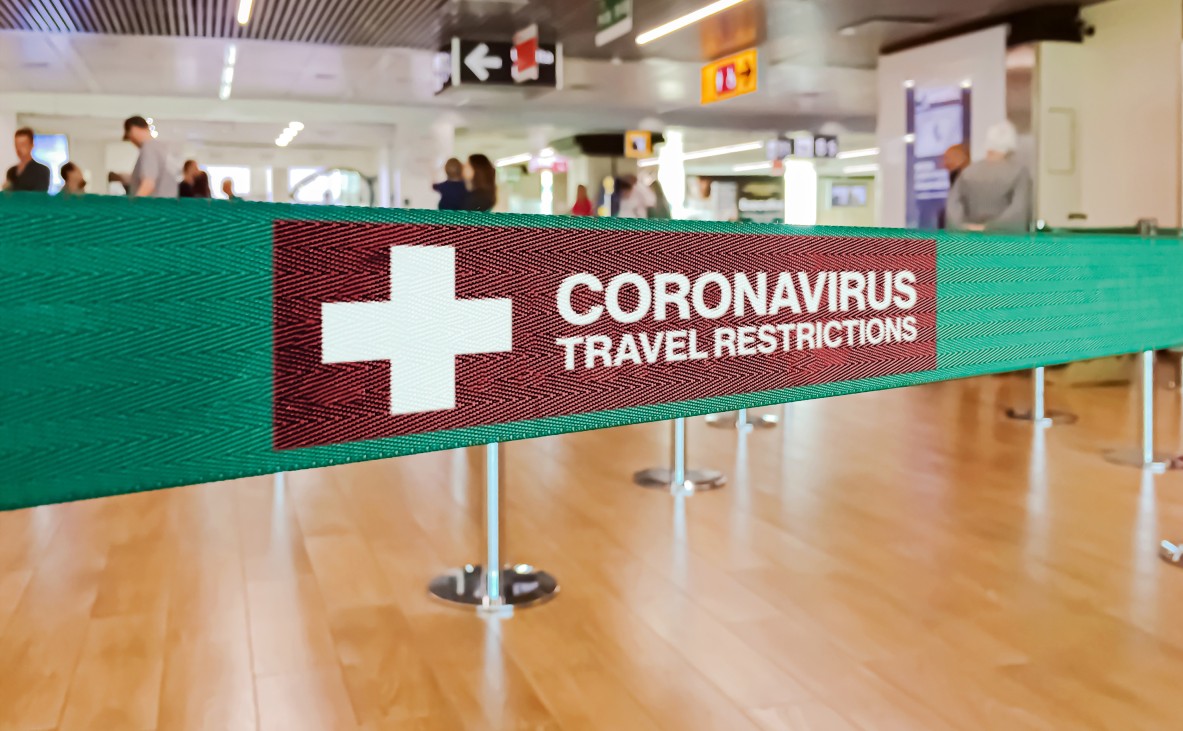It has been two years since the World Health Organization announced that the SARS-CoV-2 outbreak, which started in the Chinese metropolitan area of Wuhan just before the 2019 holidays, had become a pandemic. Since then, more than 6 million people have succumbed to complications related to COVID-19, and nearly 20% of those deaths have taken place in the United States.
Initially, some countries did much better than others in terms of reducing COVID-19 contagion and preventing hospitalizations as well as deaths; they were hailed by the international press for their management of the pandemic, but those situations were eventually turned upside down by the arrival of the Omicron variant of concern.
According to recent warnings issued by the U.S. Centers for Disease Control and Prevention, travel should avoided to Hong Kong, New Zealand, and Thailand because of their current levels of COVID-19 contagion. The CDC has placed these three nations on its Level 4 category of health risk, which means that travelers face a high likelihood of becoming infected with COVID-19 if they choose to ignore the warnings, and this is even if they have received a full vaccination scheme that includes booster shots.
The Rise and Fall of New Zealand During the Pandemic
In June 2020, Prime Minister Jacinda Ardern of New Zealand celebrated great news from her public health officials with regard to the coronavirus pandemic: Through a series of strict containment measures, the country was able to flatten the curve of COVID-19 contagion. At that time, the number of new infections in New Zealand was down to just a handful per day, and the mortality rate was close to zero. PM Ardern actually did a little dance outside of her office in The Beehive executive building of Wellington.
In March 2022, this country of just over 5 million people is dealing with record infection rates higher than 20,000 per day. If you look at the daily chart of new COVID-19 cases in New Zealand, you will see a line starting to skyrocket in mid-February. As of March 8, the seven-day average of new infections was 20,547. Thankfully, the mortality rate is still one of the lowest in the world.
Hong Kong Breaks COVID-19 Mortality Records
The pandemic situation in Hong Kong has been devastating since mid-January. This country was once hailed as a major success story in Asia, particularly when you consider that it is geographically part of China.
Throughout 2020 and 2021, the healthcare system of Hong Kong did not experience the tragedies seen in other countries such as the U.S., Brazil, India, and Russia. Infection rates were controlled thanks to smart contact tracing strategies and monitored isolation orders.
Unlike China and its authoritarian “Zero COVID” strategy, Hong Kong did not have to implement draconian pandemic management measures; this generated considerable civic pride, and there was a sense of relief among residents who felt that the worst was almost over. Shortly after some restrictions were relaxed by health officials, the Omicron variant struck pretty hard, and a low vaccination rate among the sizable elderly population resulted in hospitals becoming overwhelmed across Hong Kong.
A Public Health and Economic Collapse in Thailand
At the beginning of the pandemic, many epidemiologists believed that developing nations such as Thailand would be among the worst-hit. Despite a strong tourism sector that provides a substantial contribution to the national economy, the public healthcare system of Thailand lacks the resources needed to serve the interests of more than 70 million residents. The country ended up defying expectations and was hailed as a COVID-19 success story thanks to strict lockdowns that extended to the tourism sector.
The good people of Thailand, particularly those who depend on tourism dollars, adopted a “grin and bear it” attitude towards the pandemic. Patriotism and a sense of community helped Thai communities keep contagion and mortality rates as low as possible.
When vaccines arrived in 2021, inoculation campaigns moved very quickly; on some days, a little over a million doses were administered, and international tourists were invited back. Everything was fine until the Delta and Omicron variants started spreading across the Thai islands. These days, it is not unusual to see contagion reports as high as 25,000, and many people believe that this number could be double because of shortcomings in coronavirus testing. It should not be surprising to learn that many tourists are staying away from Thailand, and this is starting to impact the national economy again.
What the CDC Travel Warnings Say
Americans with COVID-19 symptoms should not travel at all; moreover, they should refrain from visiting Level 4 countries until 10 days after the last time they tested positive. The nations mentioned in this article are implementing their own sets of restrictions, and airlines are also free to enact their own public health measures.
A negative coronavirus test taken within 48 hours of boarding a flight has become a global standard of air travel, and the same can be said about certificates showing at least two doses of AstraZeneca, Moderna, Pfizer, Sputnik V, or SinoVac vaccines. Preferably, these certificates should have a QR code that can be scanned by airline representatives.
Travelers who have been given vaccine exemptions should be ready to present proof, and they should inform the airline ahead of time, but this will not preclude the testing requirement; nor will it prevent travelers from having to wear a mask throughout the flight. Finally, international travelers who test positive upon arrival should be ready to comply with local quarantine requirements.






